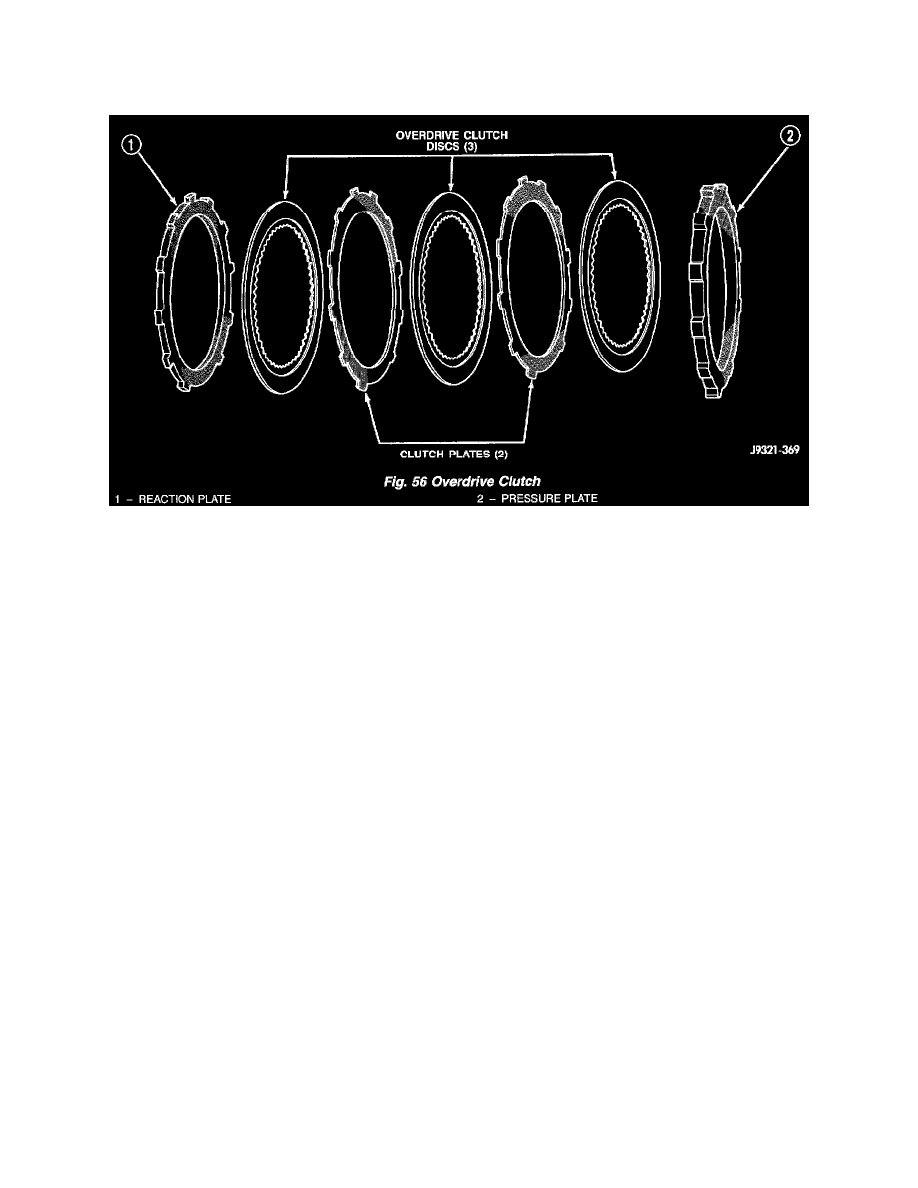RAM 2500 Van V8-5.2L Prop VIN 2 (2000)

Clutch: Description and Operation
Overdrive Clutch
DESCRIPTION
Fig. 56
The overdrive clutch (Fig. 56) is composed of the pressure plate, two clutch plates, three holding discs, overdrive piston retainer, piston, piston spacer,
and snap rings. The overdrive clutch is the forward most component in the transmission overdrive unit and is considered a holding component. The
overdrive piston retainer, piston, and piston spacer are located on the rear of the main transmission case.
NOTE: The number of discs and plates may vary with each engine and vehicle combination.
OPERATION
To apply the clutch, pressure is applied between the piston retainer and piston. The fluid pressure is provided by the oil pump, transferred through the
control valves and passageways, and enters the clutch through passages at the lower rear portion of the valve body area. With pressure applied
between the piston retainer and piston, the piston moves away from the piston retainer and compresses the clutch pack. This action applies the clutch
pack, allowing torque to flow through the intermediate shaft into the overdrive planetary gear set. The overdrive clutch discs are attached to the
overdrive clutch hub while the overdrive clutch plates, reaction plate, and pressure plate are lugged to the overdrive housing. This allows the
intermediate shaft to transfer the engine torque to the planetary gear and overrunning clutch. This drives the planetary gear inside the annulus, which is
attached to the overdrive clutch drum and output shaft, creating the desired gear ratio. The waved snap ring is used to cushion the application of the
clutch pack.
